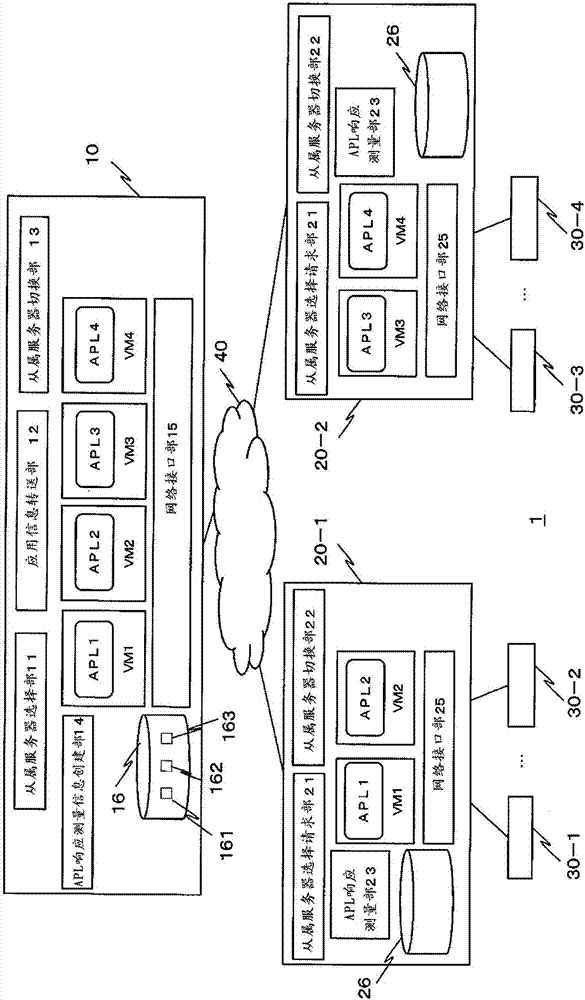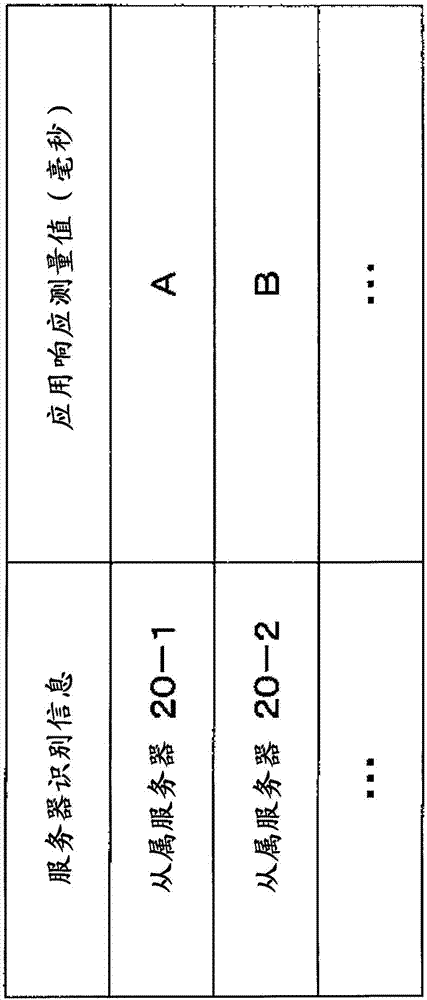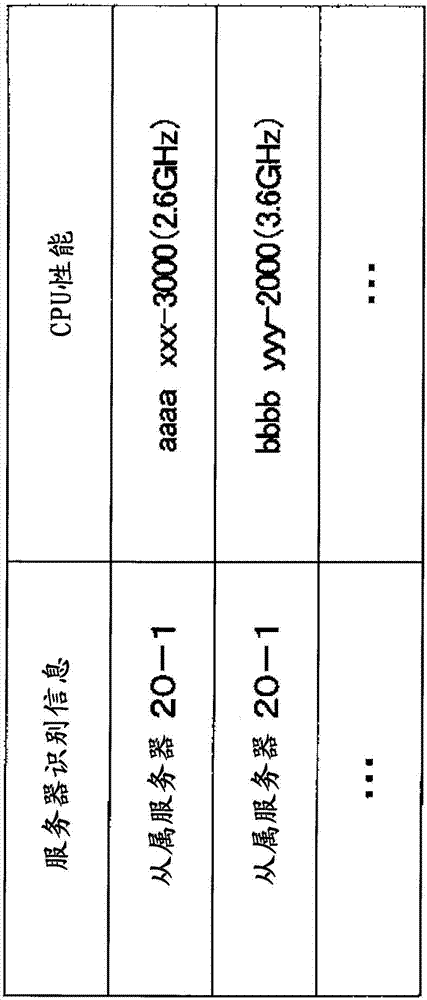Virtual-machine dynamic allocation system and server
A dynamic configuration, server technology, applied in transmission systems, instruments, computing, etc., can solve the problem that the response may not be fast
- Summary
- Abstract
- Description
- Claims
- Application Information
AI Technical Summary
Problems solved by technology
Method used
Image
Examples
Embodiment Construction
[0026] (A) Main implementation
[0027] Hereinafter, implementations of the virtual machine dynamic configuration system and server of the present invention will be described in detail with reference to the accompanying drawings.
[0028] (A-1) Configuration of Embodiment
[0029] figure 1 It is an overall configuration diagram showing the overall configuration of the network system according to the embodiment.
[0030] exist figure 1 Among them, the network system 1 of the embodiment has the master server 10, the slave servers 20-1 and 20-2, the clients 30-1 to 30-4, and the network 40.
[0031] In addition, in the following, when explaining the constituent elements common to each of the slave servers 20-1 and 20-2 and each of the clients 30-1 to 30-4, they will be shown as the slave server 20, the client 30 to illustrate. In addition, the number of each of the master server 10, the slave server 20, and the client 30 is not particularly limited.
[0032] exist figure 1...
PUM
 Login to View More
Login to View More Abstract
Description
Claims
Application Information
 Login to View More
Login to View More - R&D
- Intellectual Property
- Life Sciences
- Materials
- Tech Scout
- Unparalleled Data Quality
- Higher Quality Content
- 60% Fewer Hallucinations
Browse by: Latest US Patents, China's latest patents, Technical Efficacy Thesaurus, Application Domain, Technology Topic, Popular Technical Reports.
© 2025 PatSnap. All rights reserved.Legal|Privacy policy|Modern Slavery Act Transparency Statement|Sitemap|About US| Contact US: help@patsnap.com



